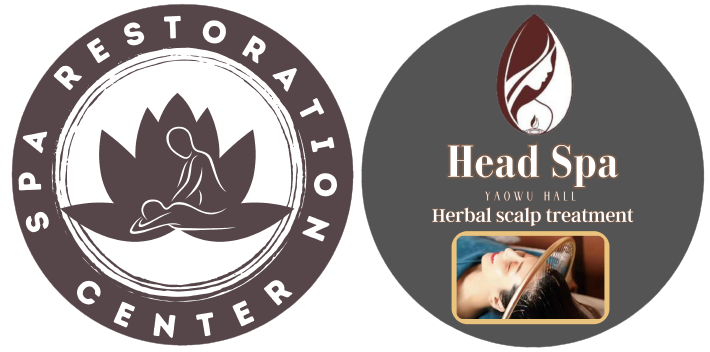
Does Deep Tissue Massage Hurt? Pain, Benefits & What to Expect
Does deep tissue massage hurt? Many people want a clear answer before trying it. Deep tissue massage uses firm, slow strokes.
The pressure can be strong and sometimes uncomfortable. It is made to target deep muscles and help muscle pain. Some discomfort is normal, but the pain should never be sharp.
This guide explains everything you need to know. You will learn:
- Does deep tissue massage hurt and what pain to expect
- Deep tissue massage pain vs. normal pressure
- The main benefits of deep tissue massage
- What a deep tissue massage experience feels like
- How to handle pain relief and recovery
If you are looking for massage therapy that helps with sore muscles, this information will help you decide. With the right approach, you can get benefits without too much pain.

What Does a Deep Tissue Massage Do?
Deep tissue massage is a type of massage therapy that uses slow, deep movements. The therapist targets muscles and connective tissue beneath the surface to release tight areas and improve mobility.
It can help with muscle pain, soreness, and “knots.” The work is slower and uses strong, focused pressure, which may feel intense but should still allow you to breathe and relax.
How Does Deep Tissue Massage Work?
Therapists use firm hands, elbows, or tools to reach deep into tight spots. Some discomfort is normal, but it shouldn’t feel sharp or burning. If it does, tell your therapist so they can adjust.
Deep tissue work can help break up scar tissue, improve blood flow, and support healing from muscle injuries. Many people choose it for pain relief and better mobility.
What Techniques Are Used in Deep Tissue Massage?
Common methods include:
- Slow, deep glides
- Pressing with elbows or fingers
- Friction across the muscle
- Focused work on tight, sore spots
These moves help release muscle knots and stiffness.
What Are the Benefits of Deep Tissue Massage?
There are many benefits of deep tissue massage. Some of the biggest are:
- Less muscle pain
- Fewer muscle knots
- More movement in stiff areas
- Quicker recovery after exercise
- Lower stress and tension
Deep tissue massage benefits anyone with tight muscles or chronic pain.
How Can Deep Tissue Massage Support Mental Health?
A massage doesn’t just help your body. It can also calm your mind. Steady, rhythmic pressure helps settle the nervous system and quiet racing thoughts.
Deep tissue massage can lower stress, ease tension, and improve mood. Many people sleep better after a session and wake up feeling clearer and more relaxed.
Does Deep Tissue Massage Hurt?
Deep tissue massage doesn’t hurt for everyone. Some people feel only mild discomfort, while others feel more. Many describe it as a “good hurt” that eases as the muscles release.
The pressure can feel strong, but you should still be able to breathe and stay relaxed. If it feels sharp, burning, or makes you tense up, speak up so your therapist can adjust.
What level of discomfort is normal?
You may feel:
- Soreness in tight areas
- Deep pressure in muscles
- A stretching or pulling feeling
- A gentle ache that goes away fast
Mild pain is normal. Sharp or stabbing pain is not. Always tell your therapist if you are not comfortable. Does deep tissue massage hurt so much you must stop? That means you should ask for less pressure.
Pain vs. therapeutic pressure explained
Good pressure feels deep but safe. It helps the muscle loosen. Bad pain feels sharp or causes you to hold your breath. Signs the pressure is too strong:
- Flinching or tightening up
- Sharp, stabbing pain
- Numbness or tingling
- Breath-holding
Therapeutic pressure relaxes your muscles. Too much pain does not help.
When to speak up and adjust pressure
Let your therapist know right away if:
- You are in sharp pain
- You tense up or clench your jaw
- The pain lasts after the massage
- You cannot relax
Does deep tissue massage hurt more than you expect? Speak up for your safety.
Is It Normal to Feel Sore After a Session?
Yes, mild soreness is common. It can feel like post-workout soreness and should fade within one to two days. This is part of deep tissue recovery as tight areas release.
If soreness lasts longer, rest and drink water. Use gentle heat or take a warm bath to relax the muscles. If pain is sharp or lingers, ease up next time and tell your therapist.
How Much Pressure Is Too Much?
Pressure is too much if it feels sharp, burning, or makes you hold your breath. Speak up right away so your therapist can adjust. The goal is relief, not injury. Deep tissue can make you sore the next day, but the soreness should be mild and short-lived.
Strong, lasting pain is a red flag. If that happens, ease up next time and tell your therapist where it hurt and for how long. You can also rest, hydrate, and use gentle heat or a warm bath to help your muscles recover.
How Should You Prepare for Your First Deep Tissue Massage?
Simple steps help you get ready:
- Drink lots of water
- Eat a light meal before
- Wear loose clothes
- Relax before your session
Preparation can help reduce deep tissue massage pain during and after your visit.
How Should You Communicate with Your Therapist?
Tell your therapist about:
- Old injuries
- Painful areas
- What hurts during the massage
Always give feedback about pressure. This helps you feel safe and get better results.
How Can You Minimize Soreness After a Deep Tissue Massage?
Good aftercare can lower soreness:
- Drink water to help your body recover
- Take a warm bath
- Stretch gently that evening
These steps support deep tissue massage recovery.
What Does Aftercare Look Like for Deep Tissue Massage?
After your massage:
- Rest your muscles
- Stay hydrated
- Use a cold pack for sore areas
- Avoid heavy exercise for a day
Listen to your body as you recover.
When Should You Seek Professional Advice?
Can deep tissue massage hurt for days or cause swelling? It shouldn’t. Mild, short-term soreness is common, but pain or swelling that lasts is a sign to check in. If something feels wrong after your session, contact a Spa Restoration massage therapist. Always share health issues like blood clots, recent surgery, or nerve problems before you book. Your safety comes first.
Spa Restoration Center therapists can review your symptoms, adjust pressure or technique, and help you decide if deep tissue is the right fit now or if another style is better while you heal.

Start your deep tissue massage routine at Spa Restoration Center today
Ready to relieve pain and recover faster? Book your deep tissue massage session at Spa Restoration in Arlington, VA. Our experienced therapists tailor every massage therapy session to your needs. Schedule your appointment today and experience real results.
Frequently Asked Questions
Does deep tissue massage hurt more than Swedish massage?
Yes. Deep tissue massage uses stronger pressure. It may feel more intense. Swedish massage is usually gentle.
How long does soreness last after a deep tissue massage?
Soreness usually lasts one or two days. If it lasts longer, take it easy and drink water.
Who should avoid deep tissue massage due to medical conditions?
People with blood clots, recent surgery, some heart problems, or certain health issues should ask a doctor first.
How often should I get a deep tissue massage for chronic muscle pain?
Many people go once or twice a month. Your therapist can recommend what is best for you.
What should I do before a session to reduce discomfort?
Drink water, eat light, and tell your therapist where you hurt. This helps reduce discomfort and deep tissue massage pain.
Does deep tissue massage hurt? Most people feel some discomfort, but you will also notice pain relief and recovery if you follow your therapist’s advice. Always speak up and care for your muscles after each session.



Leave a comment